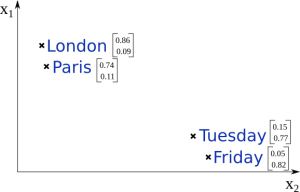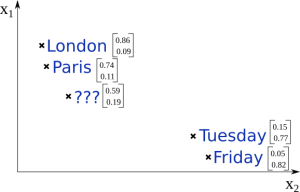NEURAL NETWORKS, PART 1: BACKGROUND
NEURAL NETWORKS, PART 1: BACKGROUND
Artificial neural networks (NN for short) are practical, elegant, and mathematically fascinating models for machine learning. They are inspired by the central nervous systems of humans and animals – smaller processing units (neurons) are connected together to form a complex network that is capable of learning and adapting.
The idea of such neural networks is not new. McCulloch-Pitts (1943) described binary threshold neurons already back in 1940’s. Rosenblatt (1958) popularised the use of perceptrons, a specific type of neurons, as very flexible tools for performing a variety of tasks. The rise of neural networks was halted after Minsky and Papert (1969) published a book about the capabilities of perceptrons, and mathematically proved that they can’t really do very much. This result was quickly generalised to all neural networks, whereas it actually applied only to a specific type of perceptrons, leading to neural networks being disregarded as a viable machine learning method.
In recent years, however, the neural network has made an impressive comeback. Research in the area has become much more active, and neural networks have been found to be more than capable learners, breaking state-of-the-art results on a wide variety of tasks. This has been substantially helped by developments in computing hardware, allowing us to train very large complex networks in reasonable time. In order to learn more about neural networks, we must first understand the concept of vector space, and this is where we’ll start.
A vector space is a space where we can represent the position of a specific point or object as a vector (a sequence of numbers). You’re probably familiar with 2 or 3-dimensional coordinate systems, but we can easily extend this to much higher dimensions (think hundreds or thousands). However, it’s quite difficult to imagine a 1000-dimensional space, so we’ll stick to 2-dimensional illustations.
In the graph below, we have placed 4 objects in a 2-dimensional space, and each of them has a 2-dimensional vector that represents their position in this space. For machine learning and classification we make the assumption that similar objects have similar coordinates and are therefore positioned close to each other. This is true in our example, as cities are positioned in the upper left corner, and days-of-the-week are positioned a bit further in the lower right corner.

Let’s say we now get a new object (see image below) and all we know are its coordinates. What do you think, is this object a city or a day-of-the-week? It’s probably a city, because it is positioned much closer to other existing cities we already know about.

This is the kind of reasoning that machine learning tries to perform. Our example was very simple, but this problem gets more difficult when dealing with thousands of dimensions and millions of noisy datapoints.
In a traditional machine learning context these vectors are given as input to the classifier, both at training and testing time. However, there exist methods of representation learning where these vectors are learned automatically, together with the model.
Now that we know about vector spaces, it’s time to look at how the neuron works.
References
- McCulloch, Warren S., and Walter Pitts. “A logical calculus of the ideas immanent in nervous activity.” The Bulletin of Mathematical Biophysics 5.4 (1943): 115-133.
- Minsky, Marvin, and Papert Seymour. “Perceptrons.” (1969).
- Rosenblatt, Frank. “The perceptron: a probabilistic model for information storage and organization in the brain.” Psychological review 65.6 (1958): 386.
NEURAL NETWORKS, PART 1: BACKGROUND的更多相关文章
- 【转】Artificial Neurons and Single-Layer Neural Networks
原文:written by Sebastian Raschka on March 14, 2015 中文版译文:伯乐在线 - atmanic 翻译,toolate 校稿 This article of ...
- A Beginner's Guide To Understanding Convolutional Neural Networks(转)
A Beginner's Guide To Understanding Convolutional Neural Networks Introduction Convolutional neural ...
- Hacker's guide to Neural Networks
Hacker's guide to Neural Networks Hi there, I'm a CS PhD student at Stanford. I've worked on Deep Le ...
- 提高神经网络的学习方式Improving the way neural networks learn
When a golf player is first learning to play golf, they usually spend most of their time developing ...
- (转)A Beginner's Guide To Understanding Convolutional Neural Networks
Adit Deshpande CS Undergrad at UCLA ('19) Blog About A Beginner's Guide To Understanding Convolution ...
- 论文笔记之:Learning Multi-Domain Convolutional Neural Networks for Visual Tracking
Learning Multi-Domain Convolutional Neural Networks for Visual Tracking CVPR 2016 本文提出了一种新的CNN 框架来处理 ...
- 神经网络指南Hacker's guide to Neural Networks
Hi there, I'm a CS PhD student at Stanford. I've worked on Deep Learning for a few years as part of ...
- NEURAL NETWORKS, PART 2: THE NEURON
NEURAL NETWORKS, PART 2: THE NEURON A neuron is a very basic classifier. It takes a number of input ...
- [CVPR2015] Is object localization for free? – Weakly-supervised learning with convolutional neural networks论文笔记
p.p1 { margin: 0.0px 0.0px 0.0px 0.0px; font: 13.0px "Helvetica Neue"; color: #323333 } p. ...
随机推荐
- GCC 编绎选项 转
gcc提供了大量的警告选项,对代码中可能存在的问题提出警告,通常可以使用-Wall来开启以下警告: -Waddress -Warray-bounds (only with -O2) ...
- ctkPlugin插件系统实现项目插件式开发
插件式开发体会: 自开始写[大话QT]系列就开始接触渲染客户端的开发,说是开发不如更多的说是维护以及重构,在接手这块的东西之前自己还有点犹豫,因为之前我一直认为客户端嘛,没什么技术含量,总是想做比较有 ...
- JavaScript 应用开发 #5:为完成的任务添加样式
判断一下任务的状态,如果是完成的任务,可以在任务项目的上面,添加一个额外的 css 类,在这个 css 类里,可以去定义完成的任务的样式.比如,把文字的颜色变成浅友色,并且在文字上面添加一条删除线.这 ...
- Tomcat Server 原理
构成: 1.server代表整个catalina serverlet容器 2.service:由一个或多个connector以及一个共享的engine处理引擎组成 3.connector 在指定端口上 ...
- VS中新建网站和新建项目web应用程序的区别?(实际应用总结一点)
1,在网站中是没有命名空间namespace这个概念的.例如公共类只有放在App_Code里(不但是公共类,所有的类都应放在这里),其他的类或者页面才可以引用.有using这个概念,但没有namesp ...
- css3中允许单词内断句word-wrap和怎么处理断句word-break
首先说一下:浏览器的默认行为,在一行中几个单词 排列着,如果最后一个长单词 太长时 首先是移到下一行,如果该单词的长度大于父元素的宽度,会溢出. <!doctype html> <h ...
- 自己写的demo---声明异常同时处理异常,或者继续抛出异常
package exception; public class exception { public static void main(String args[]) { /*** * 不能对类型 ex ...
- Java-struts2 之值栈问题
这里是根据一个小项目,将数据库的值查出来,然后在页面前台进行遍历的方法 放入值的几种方式: Struts2的三种存值取值的方式 值栈: 栈上下文: ActionContext: package com ...
- C#中堆和栈的区别分析(有待更新总结2)
转载:http://blog.csdn.net/Zevin/article/details/5731965 线程堆栈:简称栈 Stack 托管堆: 简称堆 Heap 使用.Net框架开发程序的时候,我 ...
- T-SQL中的透视和逆透视
透视 今天抽一点时间来看看透视和逆透视语句,简单的说就是行列转换.假设一个销售表中存放着产品号,产品折扣,产品价格三个列,每一种产品号可能有多种折扣,每一种折扣只对应一个产品价格.下面贴出建表语句和插 ...
